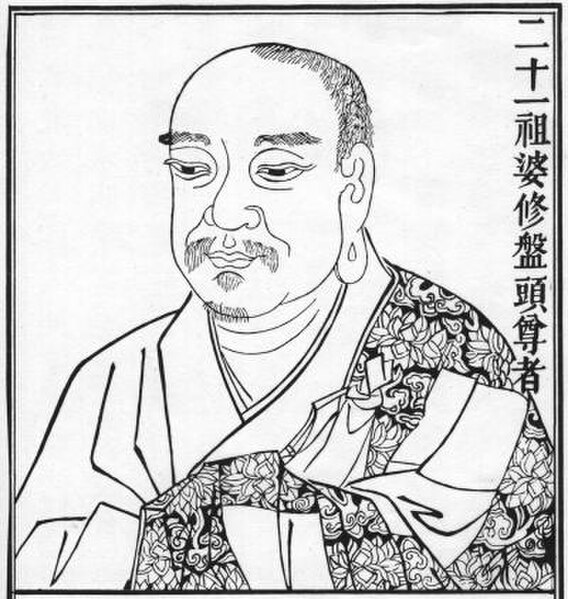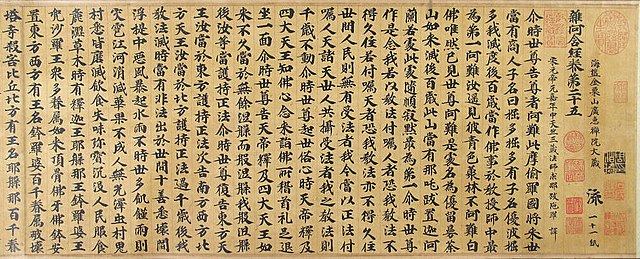The Abhidharma are a collection of Buddhist texts dating from the 3rd century BCE onwards, which contain detailed scholastic presentations of doctrinal material appearing in the canonical Buddhist scriptures and commentaries. It also refers to the scholastic method itself, as well as the field of knowledge that this method is said to study.
Depiction of the First Council at Rajgir, a painting at the Nava Jetavana, Shravasti.
Seated Buddha from the Sarvāstivādin monastery of Tapa Shotor, 2nd century CE
Buddhaghosa (c. 5th century), the most important Abhidhamma scholar of Theravāda, presenting three copies of the Visuddhimagga.
Vasubandhu's Abhidharmakośabhāsya is a major source in Tibetan and East Asian Buddhism.
Buddhist texts are religious texts that belong to, or are associated with, Buddhism and its traditions. There is no single textual collection for all of Buddhism. Instead, there are three main Buddhist Canons: the Pāli Canon of the Theravāda tradition, the Chinese Buddhist Canon used in East Asian Buddhist tradition, and the Tibetan Buddhist Canon used in Indo-Tibetan Buddhism.
Illustrated Sinhalese covers and palm-leaf pages, depicting the events between the Bodhisattva's renunciation and the request by Brahmā Sahampati that he teach the Dharma after the Buddha's awakening
Illustrated Lotus Sūtra from Korea; circa 1340, accordion-format book; gold and silver on indigo-dyed mulberry paper
Folio from a manuscript of the Aṣṭasāhasrikā Prajñāpāramitā Sūtra depicting Shadakshari Lokesvara, early 12th century, opaque watercolor on palm leaf
Samyutagama Sūtra, Medieval China, 11th century








